Posts Tagged: drone
Day 6 of National Pollinator Week: Meet the Drone Fly
It's Day 6 of National Pollinator Week. Meet the drone fly (Eristalis tenax), often mistaken...
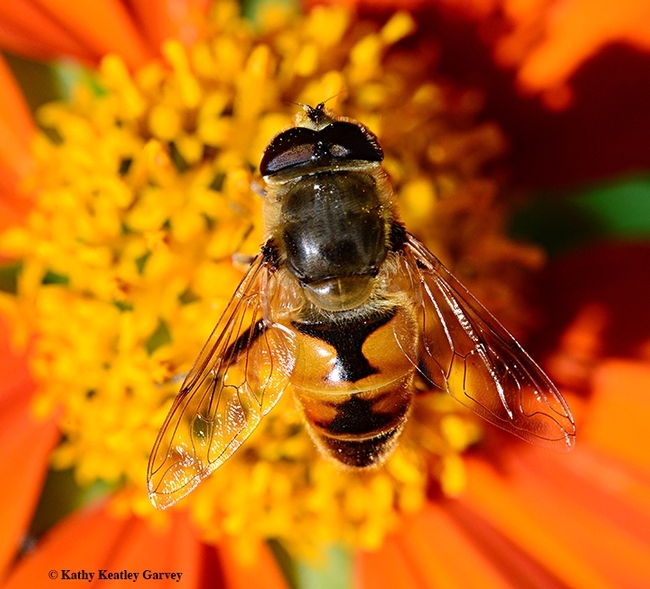
This drone fly (Eristalis tenax) is often mistaken for a honey bee. (Photo by Kathy Keatley Garvey)
Henrietta and the Drone Fly: The Predator and the Prey
Henrietta, our Stagmomantis limbata praying mantis, perches on a Mexican sunflower (Tithonia). She...
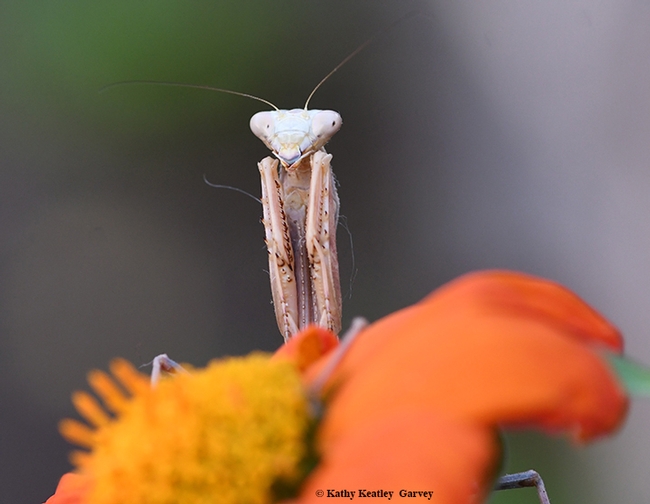
Henrietta, our Stagmomantis limbata praying mantis, lies in wait on a Mexican sunflower (Tithonia.) (Photo by Kathy Keatley Garvey)
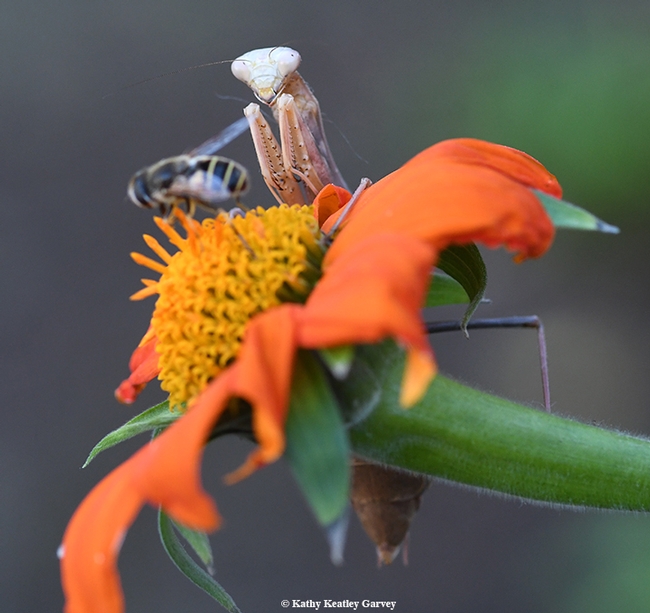
A drone fly (syrphid) lands on the blossom as a hungry praying mantis watches intently. (Photo by Kathy Keatley Garvey)
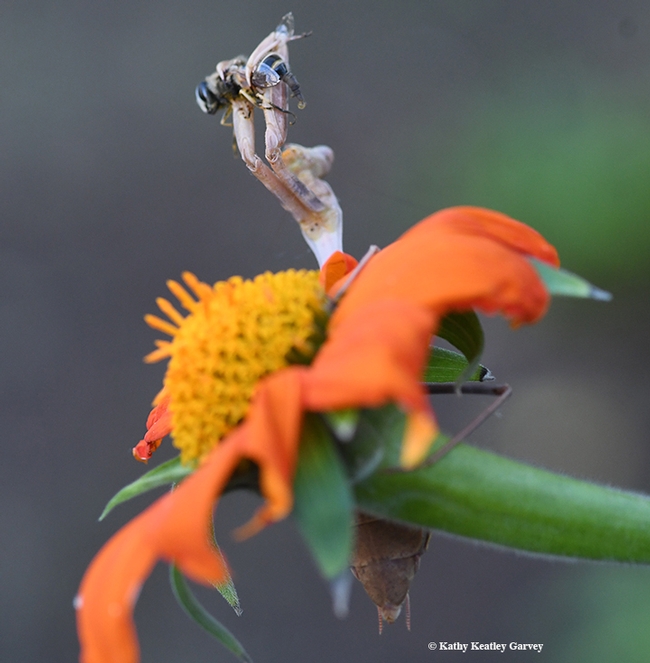
One quick move and praying mantis has dinner. (Photo by Kathy Keatley Garvey)
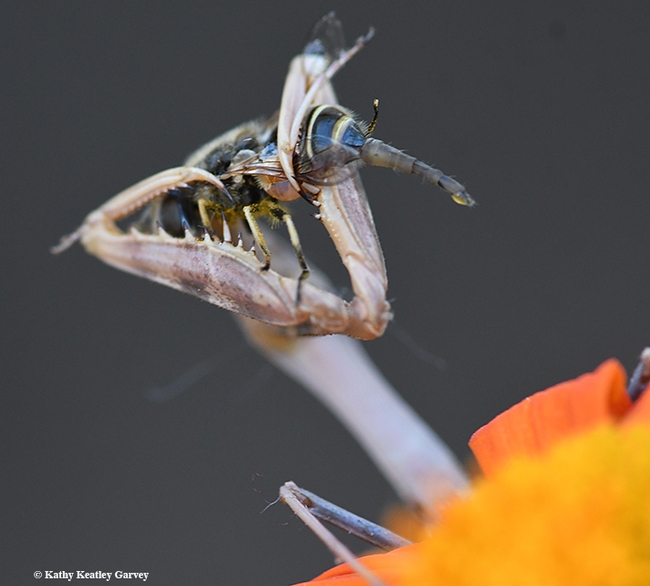
The spiked forelegs hold the prey in place. (Photo by Kathy Keatley Garvey)
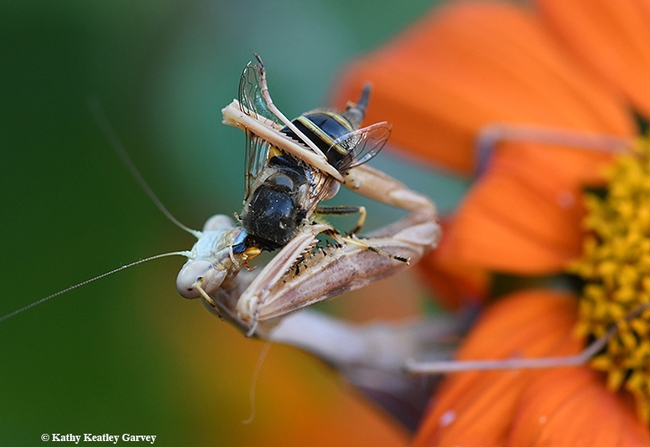
It's eat and be eaten in the garden. (Photo by Kathy Keatley Garvey)
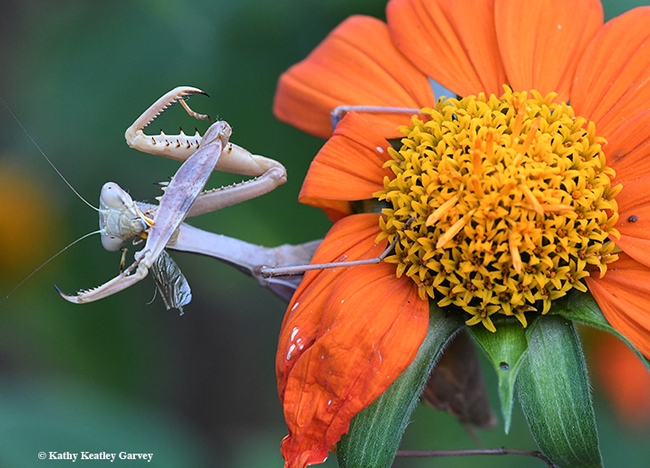
Henrietta the praying mantis polishes off the last of the fly but a wing is visible evidence of what happened. (Photo by Kathy Keatley Garvey)
A Case of Mistaken Identity
They can't drain your bank account. They can't open up new credit cards. They can't get medical...
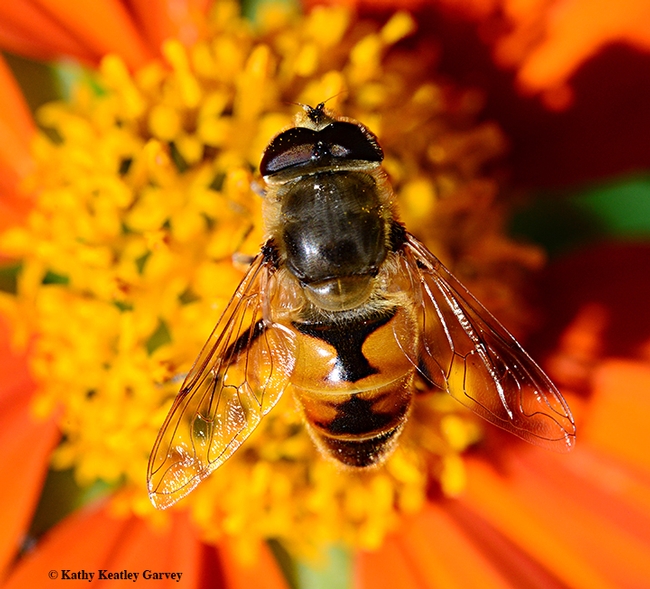
Meet the drone fly (Eristalis tenax), often mistaken for a honey bee. Note the one set of wings, large eyes, stubby antennae and a distinguishing "H" on its abdomen. (Photo by Kathy Keatley Garvey)
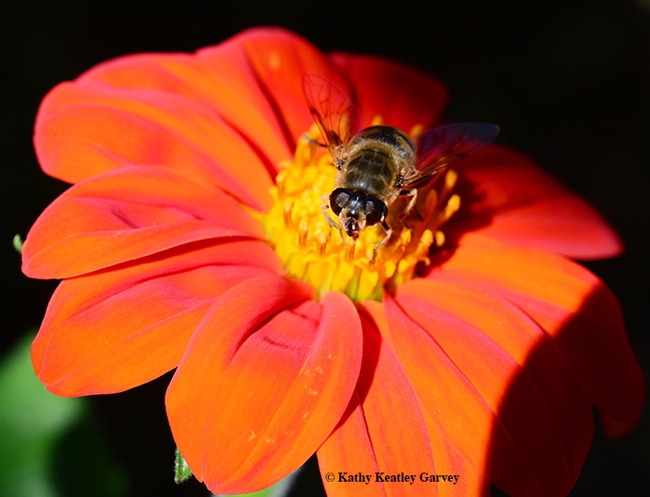
Drone fly nectaring on Mexican sunflower, Tithonia. (Photo by Kathy Keatley Garvey)
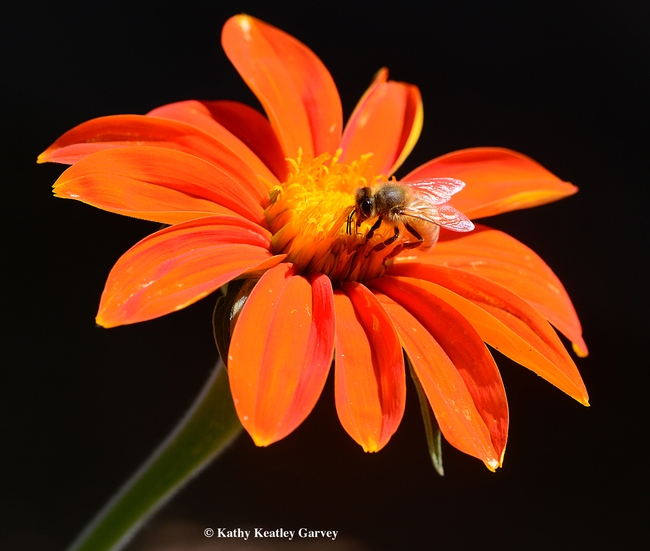
A honey bee sipping nectar from a Mexican sunflower (Tithonia). (Photo by kathy Keatley Garvey)
Please consider attending the two drone workshops scheduled at Kearney April 13th and April 14th 2017.
UC ANR Kearney Agricultural Research and Extension Center (KARE) will be the location for two related drone workshops. The goals of these workshops are to provide an overview of unmanned aerial systems (UAS) technology and best practices for data collection, and an insight of drone regulations and data processing to affiliates of the University of California Division of Agriculture and Natural Resources (UC ANR), as well as public and private resource professionals.
Each workshop costs $30.
Drone Technology and Data Collection, Thursday, April 13th, 2017, 11:00am to 4:00pm. This workshop will provide an overview of unmanned aerial systems (UAS) technology and best practices for data collection. It is designed for participants with little to no experience with drone technology, who are interested exploring practical applications of drones for a variety of data collection interests. The workshop will begin with a lecture on drone technology, and considerations for flight planning and deploying your drone. We will then go outside for a drone demo, where we will be joined by Green Valley International who specializes in LIDAR drone applications, for some hands-on experience with flying a variety of common quad-copter platforms. To conclude the workshop, we will discuss a wide variety of potential scientific and management oriented applications for drones, and associated mission specific considerations. Click here to register.
Drone Regulations and Data Processing, Friday, April 14th, 2017, from 10:00am to 3:00pm. This workshop is designed for participants with little to no experience with drone data or GIS software applications. Following a brief lecture on regulations and how to prepare for the FAA Part 107 Remote Pilot License test, hands-on exercises will introduce you to the steps you will need to know for processing drone imagery and Lidar data to create your own maps. To conclude the workshop, we will compare the various types of data that can be collected by drones to identify the advantages of each data set for different research and management interests. Click here to register.
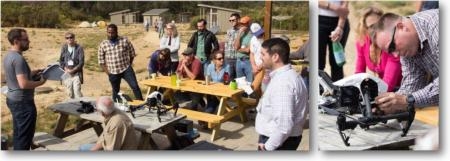
Sharing the Nectar--But Not All at the Same Time
Everybody eats in the pollinator garden. Maybe not at the same time, but they all eat. We noticed...

A syrphid fly (bottom right) heads toward a Mexican sunflower occupied by a honey bee. The fly, aka hover fly and flower fly, wants some nectar, too.(Photo by Kathy Keatley Garvey)
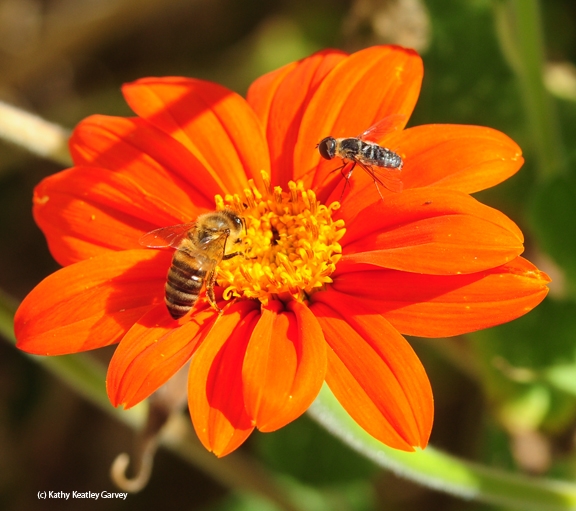
Can we share? As the honey bee keeps nectaring, the syrphid comes in for a taste. (Photo by Kathy Keatley Garvey)
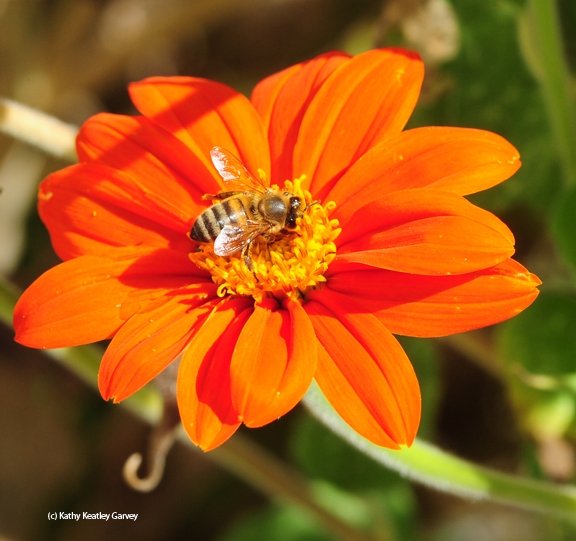
All mine! The honey bee wins. (Photo by Kathy Keatley Garvey)
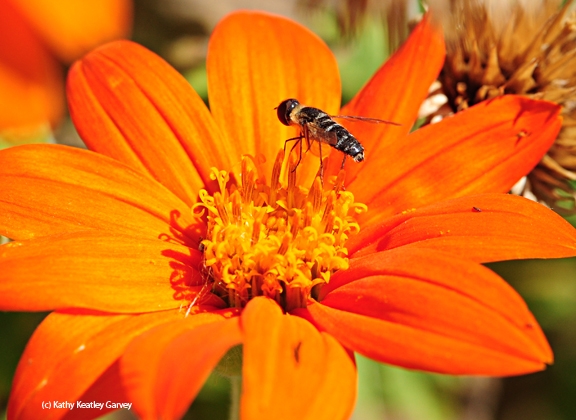
All mine! The syprhid fly takes over. (Photo by Kathy Keatley Garvey)
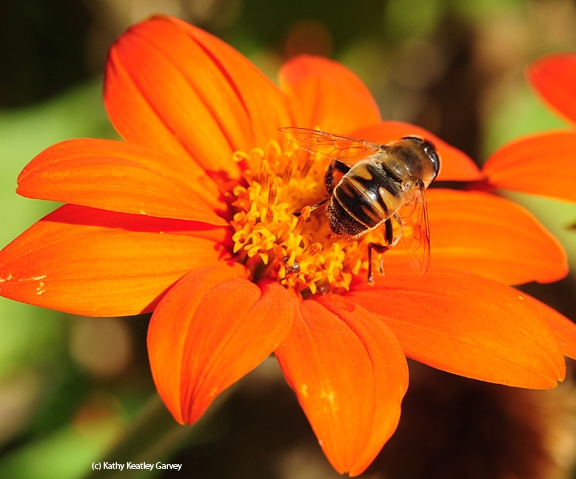
All mine! A drone fly claims it. The drone fly is often mistaken for a bee. Note the "H" on the abdomen of the fly. (Photo by Kathy Keatley Garvey)